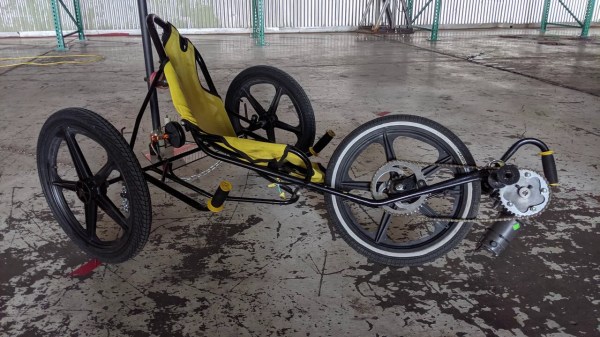Electric bikes, and really all electric vehicles, have one major downside: the weight and cost of batteries. Even with lithium, battery packs for ebikes can easily weigh more than the bike itself and cost almost as much. But having to deal with this shortcoming could be a thing of the past thanks to [LightningOnDemand]’s recent creation. Of course, this would rely on a vast infrastructure of Tesla coils since that’s how this bike receives the power it needs to run its electric motor.
The Tesla coil used for the demonstration is no slouch, either. It’s part of the Nevada Lightning Laboratory and can pack a serious punch (PDF warning). To receive the electrical energy from the coil, the bike (actually a tricycle) uses a metal “umbrella” of sorts which then sends the energy to the electric motor. The bike drags a chain behind itself in order to have a ground point for the electricity to complete its circuit. There is limited range, though, and the Tesla coil will start ionizing paths to the ground if the bike travels too far away.
While we can’t realistically expect Tesla’s idea of worldwide, free, wireless electricity to power our bicycles anytime soon, it is interesting to see his work proven out, even if its on a small scale like this. Of course, it doesn’t take a research laboratory to start working with Tesla coils. This one is built out of common household parts and still gets the voltages required to create the signature effects of a Tesla coil.
Thanks to [Adam] for the tip!










